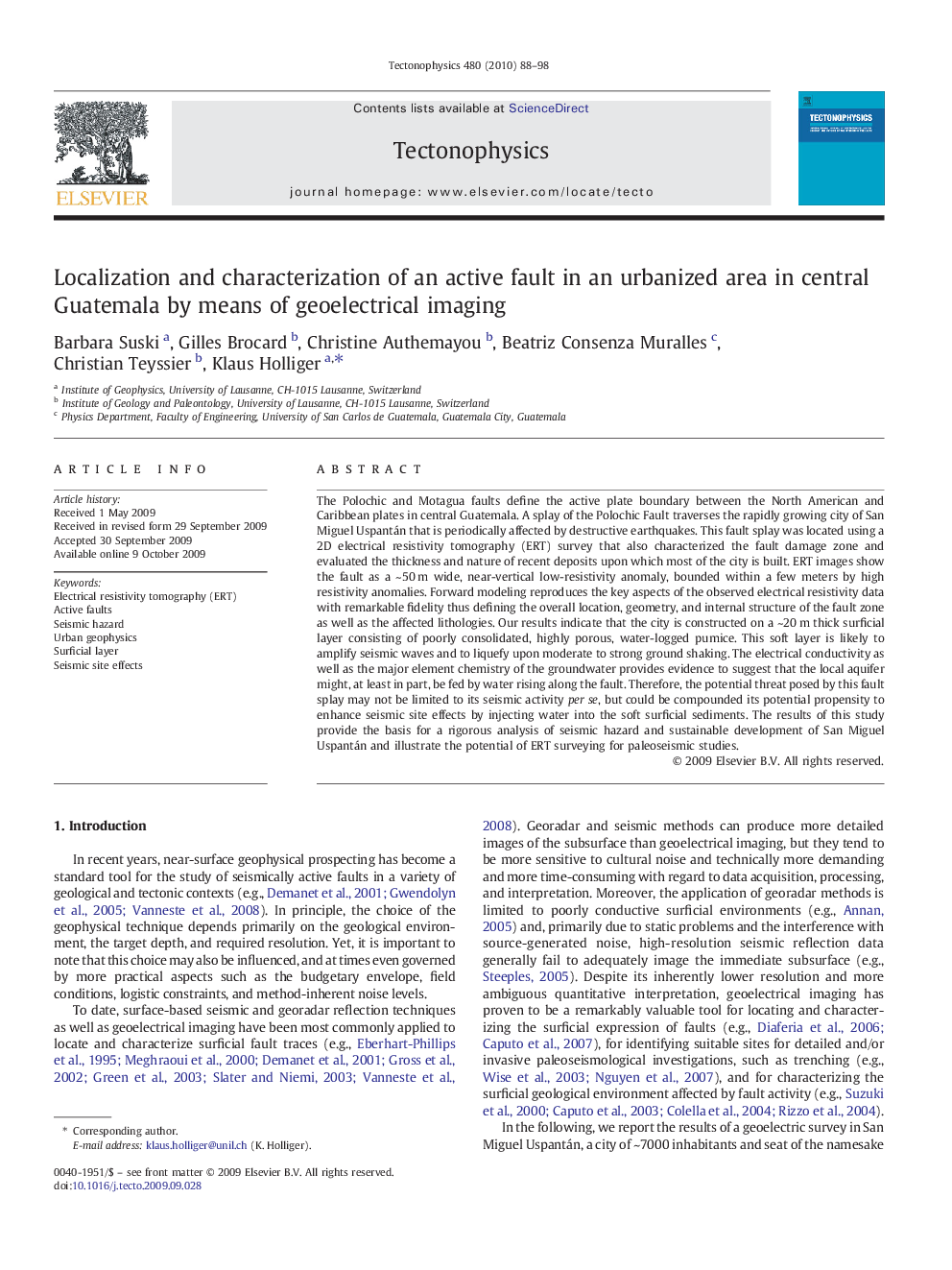| Article ID | Journal | Published Year | Pages | File Type |
|---|---|---|---|---|
| 4693672 | Tectonophysics | 2010 | 11 Pages |
The Polochic and Motagua faults define the active plate boundary between the North American and Caribbean plates in central Guatemala. A splay of the Polochic Fault traverses the rapidly growing city of San Miguel Uspantán that is periodically affected by destructive earthquakes. This fault splay was located using a 2D electrical resistivity tomography (ERT) survey that also characterized the fault damage zone and evaluated the thickness and nature of recent deposits upon which most of the city is built. ERT images show the fault as a ~50 m wide, near-vertical low-resistivity anomaly, bounded within a few meters by high resistivity anomalies. Forward modeling reproduces the key aspects of the observed electrical resistivity data with remarkable fidelity thus defining the overall location, geometry, and internal structure of the fault zone as well as the affected lithologies. Our results indicate that the city is constructed on a ~20 m thick surficial layer consisting of poorly consolidated, highly porous, water-logged pumice. This soft layer is likely to amplify seismic waves and to liquefy upon moderate to strong ground shaking. The electrical conductivity as well as the major element chemistry of the groundwater provides evidence to suggest that the local aquifer might, at least in part, be fed by water rising along the fault. Therefore, the potential threat posed by this fault splay may not be limited to its seismic activity per se, but could be compounded its potential propensity to enhance seismic site effects by injecting water into the soft surficial sediments. The results of this study provide the basis for a rigorous analysis of seismic hazard and sustainable development of San Miguel Uspantán and illustrate the potential of ERT surveying for paleoseismic studies.
